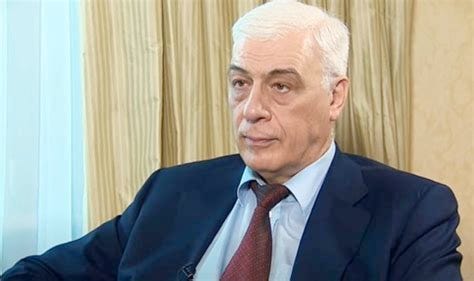Another Conversation with General Evgeny Buzhinsky… How Did the Russian Military Survive the Collapse of the Soviet Union?
I wish the US military had Generals like Evgeny Buzhinsky. I had my first conversation with General Buzhinsky in June of this year during my visit to Moscow (here). I have learned more about NATO since that visit and wanted to explore more in-depth how the Russian military survived the collapse of the Soviet Union.
General Evgeny (Yevgeny) Buzhinsky is a retired Russian Lieutenant-General and a prominent expert in international security, arms control, and military diplomacy. He served in the Russian Armed Forces from 1968 to 2009, holding numerous significant positions, particularly related to military cooperation and international treaties. From 2002 to 2009, he was the Head of the International Treaty Directorate and Deputy Head of the Main Directorate for International Military Cooperation at the Russian Ministry of Defense.
After retiring from military service, Buzhinsky has been active as Chairman of the PIR Center’s Executive Board, Co-Chairman of the Trialogue Club International, and Vice President of the Russian International Affairs Council (RIAC). He is also involved in academic work, teaching courses on arms control and nonproliferation studies at Moscow State University and other institutions. Buzhinsky frequently provides analysis on Russian military policy, arms control negotiations, security issues, and Russia-NATO relations
I count General Buzhinsky as a new friend. He is an unassuming man… by that I mean he is not full of himself. There is nothing false or pretentious about him. I hope you find our conversation as enlightening as I did:
Looks like Trump’s tariff gambit is starting to backfire. Let’s start with the bad news for US soybean farmers. The latest news on US soybean exports highlights a severe decline in sales to China, the country’s former top buyer. As of August 2025, China has made zero new crop purchases of US soybeans for the 2025/26 marketing year, a dramatic reversal from previous years that is placing immense financial pressure on US farmers. This steep drop is due to continued retaliatory tariffs and trade tensions, resulting in China’s overall import duty on US soybeans hitting 34%, which makes them far more expensive than South American soybeans. As a result, China has shifted its purchases almost entirely to Brazil and, increasingly, Argentina.
US soybean export sales for the upcoming harvest are down 81% from the five-year average, with farmers warning they “cannot survive a prolonged trade dispute” with China. Industry groups and the American Soybean Association are urging the US administration to reach a new deal with China, as current low prices and input costs have put many growers at a financial breaking point. US officials say they are prioritizing trade negotiations, but so far Chinese buying has not returned. The situation is urgent as the harvest nears, and without new deals, the outlook for US soybean exports remains troubled
Are you a big coffee drinker? Then get ready to pay more. The price of coffee beans for US manufacturers has surged sharply in 2025. As of August 25, Arabica coffee futures rose to $3.92 per pound, marking a 30% increase just in the past month and about a 56% jump year-over-year. This spike is driven by a combination of extremely tight global supplies—especially out of Brazil due to droughts, frost, and slow exports—and new US import tariffs that make foreign beans, especially Brazilian, 10–50% more expensive. US certified coffee stocks are at their lowest in years, and many suppliers warn of ongoing volatility and potential for further price increases if weather or trade issues worsen.
For US manufacturers, these higher green bean costs are translating into record-high wholesale and retail prices. Many coffee roasters expect this level—or further increases—to persist into 2026 unless there is trade policy relief or a significant improvement in harvest conditions globally.
I believe we will see new about other tariff shocks like this in the coming weeks.
Here are my chats today with Nima and with Judge Napolitano:



"The latest news on US soybean exports highlights a severe decline in sales to China, the country’s former top buyer. As of August 2025, China has made zero new crop purchases of US soybeans for the 2025/26 marketing year, a dramatic reversal from previous years that is placing immense financial pressure on US farmers. "
Over 95% of America's soybeans are patent protected Monsanto GMO soaked in glyphosate & most heavily subsidized commodity crops that ALL feed industrial agribusiness NOT farmers. Same with corn/ethanol/biofuel, cotton, sugar beets & tobacco. Hillary Clinton's State Dept was shown in WikiLeaks Diplomatic Cables to strong arm trade deals w GMO crops nobody needs or wants. Brazil has seen vast rainforest clear cut to plant Monsanto soy for feed too.
https://web.archive.org/web/20220623213618/https://www.ers.usda.gov/data-products/adoption-of-genetically-engineered-crops-in-the-us/recent-trends-in-ge-adoption/
https://web.archive.org/web/20210506232642/https://www.cato.org/policy-analysis/archer-daniels-midland-case-study-corporate-welfare
EWG Subsidy Database.. fun sort options!
Members of Congress. https://farm.ewg.org/progdetail.php?fips=00000&progcode=total&page=district®ionname=theUnitedStates
Top Beneficiaries by $$$. https://farm.ewg.org/progdetail.php?fips=00000&progcode=total&page=conc®ionname=theUnitedStates